what is the best brands of frozen store bought salmon to buy
With millions of species of fish in the sea, information technology's odd that we simply have certain types of seafood in the grocery shop. One of the most popular, salmon, is a testament to that uniformity. But since salmon is so high in omega-3 fatty acids, it'south incredibly popular and very nutritious. But which salmon products are the all-time? Yous've trusted Mamavation to bring yous topics similar best & worst hummus, best & worst cookware, and best & worst collagen, now join us every bit nosotros explore all the best & worst salmon brands.
Disclosure: This mail contains affiliate links.
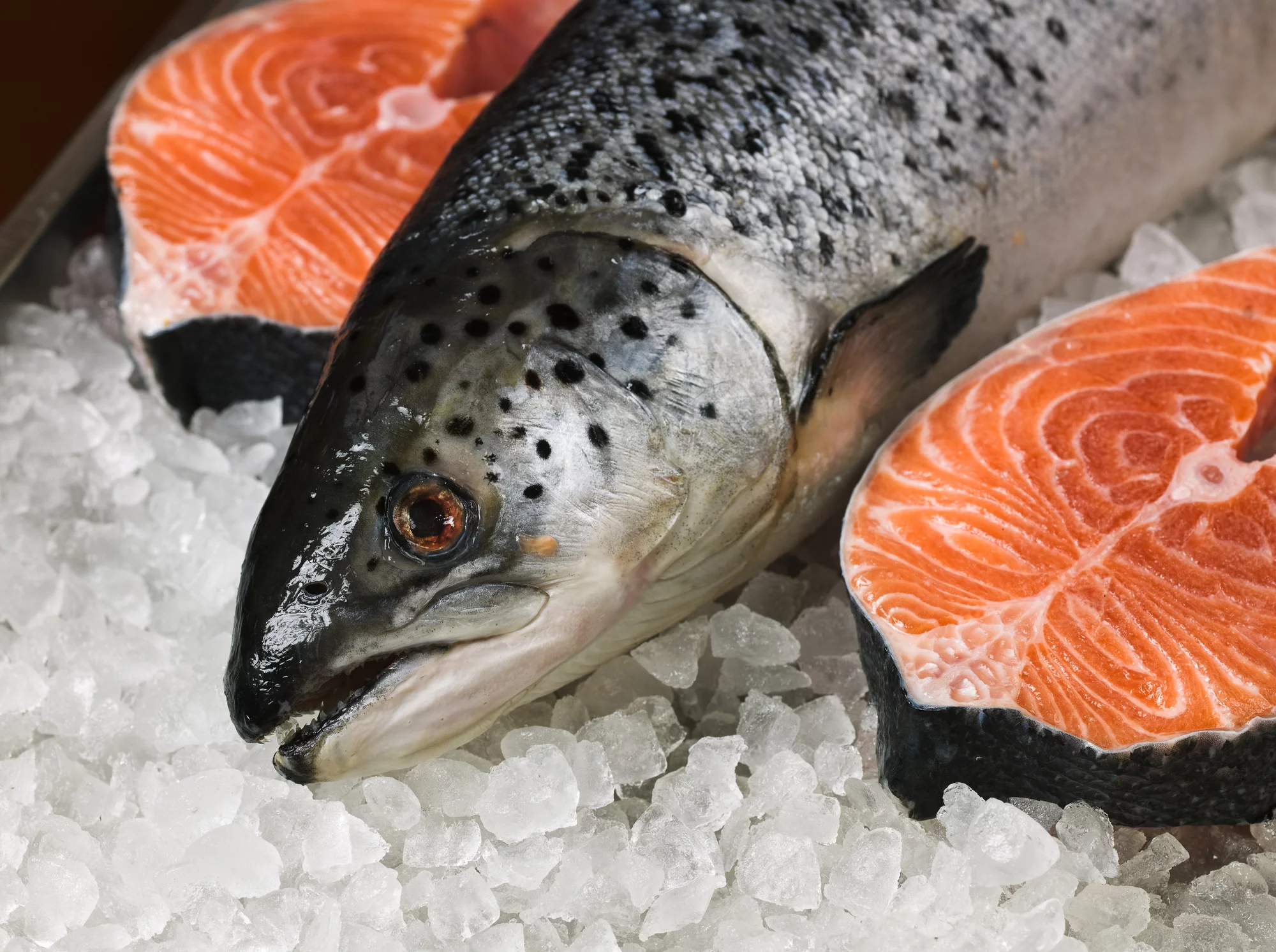
Salmon: The Near Commercialized Fish EVAH
When y'all are at the grocery store buying salmon because you have a great recipe and you lot're thinking about delicate textures & flavors, garlic butter, parsley, lemon juice, fresh herbs, pepper, olive oil, and a side salad, things are not what they seem. Whether it be salmon patties or salmon tacos, all the Atlantic Salmon you run into on the grocery store shelves are actually farmed salmon, not wild-caught salmon. So most of the time, the salmon dish that yous thew in the oven roasting or salmon burgers yous fried up on a skillet on loftier heat aren't exactly what you lot thought. These salmon swim in large tanks that can hold up to 70,000 fish from places like Norway, Canada, Chile, Scotland, & Iceland.
If you are looking for wild-defenseless salmon like Sockeye salmon, Pinkish salmon, Coho salmon, Chum salmon, or California "Steelhead" it's nearly likely coming from the Pacific Northwest, unless yous are buying Chinook salmon, which is from places like New Zealand.
Most grocery stores stock Atlantic Salmon, which was one time known as the "Male monarch of Fish" because of how prevalent it used to exist. If yous club salmon at a eating place, it's also probable Atlantic Salmon. Atlantic Salmon are unique because of their size and the fact that they alive in both fresh and saltwater at different times of their life.
Atlantic Salmon in the wild used to be plentiful, merely non today. In fact, commercial fishing of wild Atlantic Salmon is illegal. They are the just salmon species institute in the Atlantic Ocean, and the National Oceanic and Atmospheric Administration (NOAA) is working on a projection to bring them back from extinction. So y'all'll see lots of Atlantic Salmon in fish farms, but not in the wild.
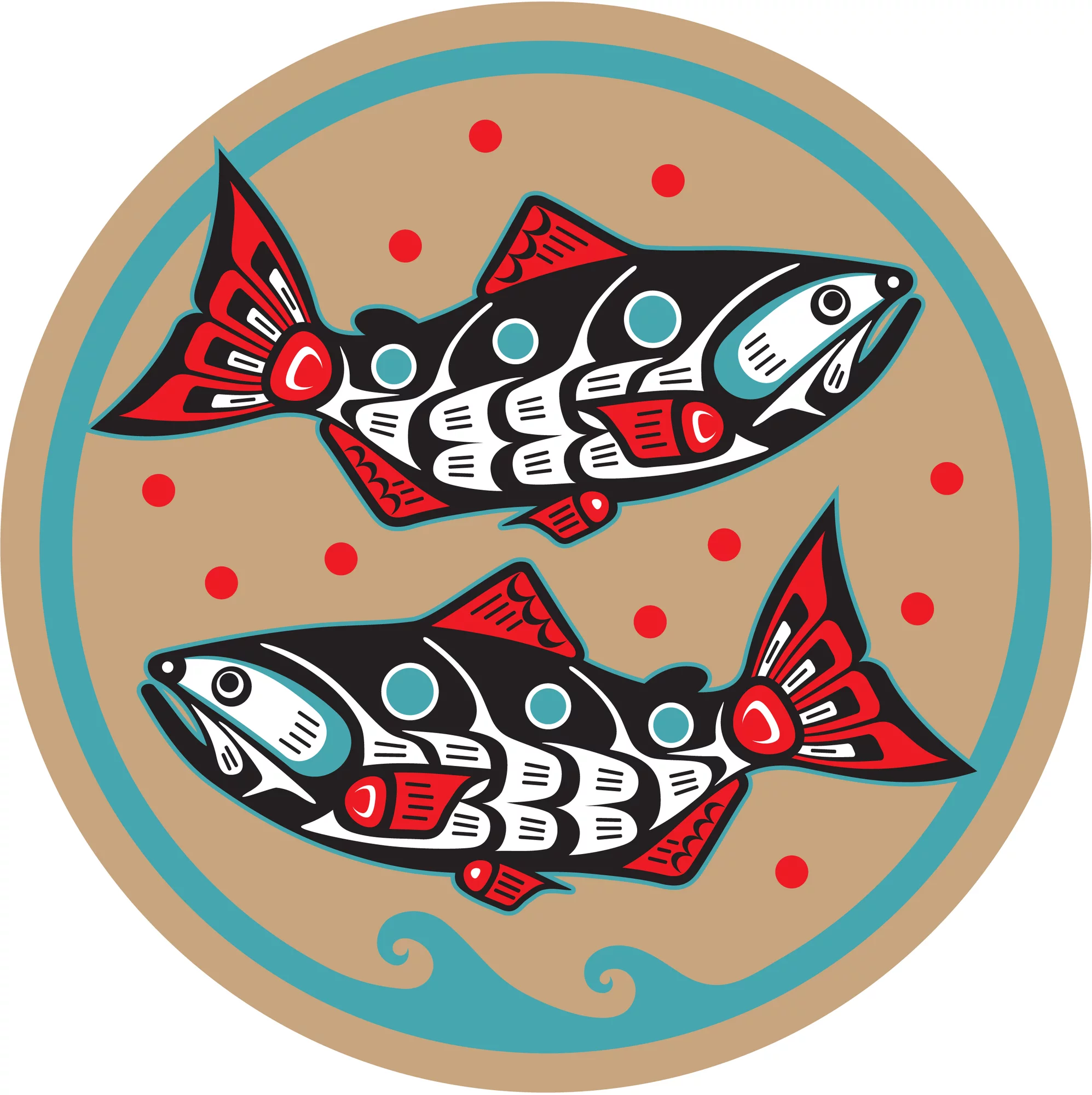
What Happened to the Wild Atlantic Salmon?
Since the 19th Century, the population of Atlantic Salmon has dwindled down to 1% from the pre-colonial era. When European settlers settled in Maine and across the Northeastern portion of the United states, they built dams, created pollution, and overfished the Atlantic salmon population. This led to an immediate die-off of Salmon that were not able to accomplish the Atlantic Ocean to grow and mature. Past 1985, in that location were only about 5,000 developed Atlantic Salmon, and today that number has dwindled to about ane,000 fish returning to Maine'southward rivers according to NOAA.
Atlantic Salmon have a challenging life spawning and growing up in freshwater rivers, migrating out to saltwater to feed and grow mature, and and then returning back to freshwater they were born in to spawn again. Some Atlantic Salmon make that unabridged journey and finally perish, but they fared improve than near who die trying to make it out to sea. They die off from pollution, the inroad of industries, which affects reproduction, and lack of admission to the Atlantic Ocean because of dams.
Ethnic people such as the Sámi and the Nez Perce living along the Colombia River and in the State of Maine, yet have the power to fish for Atlantic Salmon. Ethnic peoples and salmon take co-evolved over an estimated 6,000 to ten,000 years when Salmon was more plentiful. Today, barely 1% of the amount of Atlantic Salmon swims in the rivers of Maine compared to what was bountiful in the past.

Largest Farmed Atlantic Salmon Company Sued for Deceiving Consumers Raising Dubiousness on Manufacture–Ducktrap / Mowi
On July 30th, a lawsuit was filed by the Organic Consumers Clan against Mowi® ASA, the largest farmed Atlantic salmon company in the world. Mowi owns brands Ducktrap River® Maine, Donegal Silver®, Admiral'south, Pieters, Laschinger, Kritsen, Harbour Salmon Company, Rebel Fish, Sterling Salmon, Supreme Salmon, Olavs, & Northern Harvest Seafarms.
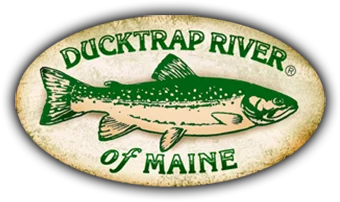
In this lawsuit, they list several misrepresentations by Mowi® in their marketing practices of products under the smoked Atlantic salmon brand Ducktrap. These are of import because may I remind you, this is the largest producer of farmed Atlantic Salmon in the world. Here's what is alleged in the lawsuit:
- Greenish WASHING: Ducktrap uses terms like "sustainably sourced" "farmed sustainably" and "eco-friendly" suggesting to consumers that the products are made from salmon sourced in accordance with higher ecology and animal welfare standards.
- DRUG Employ: Ducktrap uses terms similar "all-natural" "100% natural" and "made from salmon that are not treated with artificial chemicals" which leads you to believe they aren't using synthetic pesticides, antibiotics, bleach, formalin and sedatives (not joking) on the fish, which the lawsuit alleges they are.
- Incorrect LOCATION: Ducktrap uses terms like "from Maine" "Maine seafood" and "from the declension of Maine" leading consumers to believe their farmed fish are from Maine, which the lawsuit alleges is simulated and misleading considering they are from Chile, Scotland, Republic of iceland, & Norway, not Maine.
It's hard to believe that the largest fish conglomerate in the earth would actively deceive customers only these allegations lead the states to await at the manufacture as a whole. The farmed Atlantic Salmon manufacture has some problematic practices.
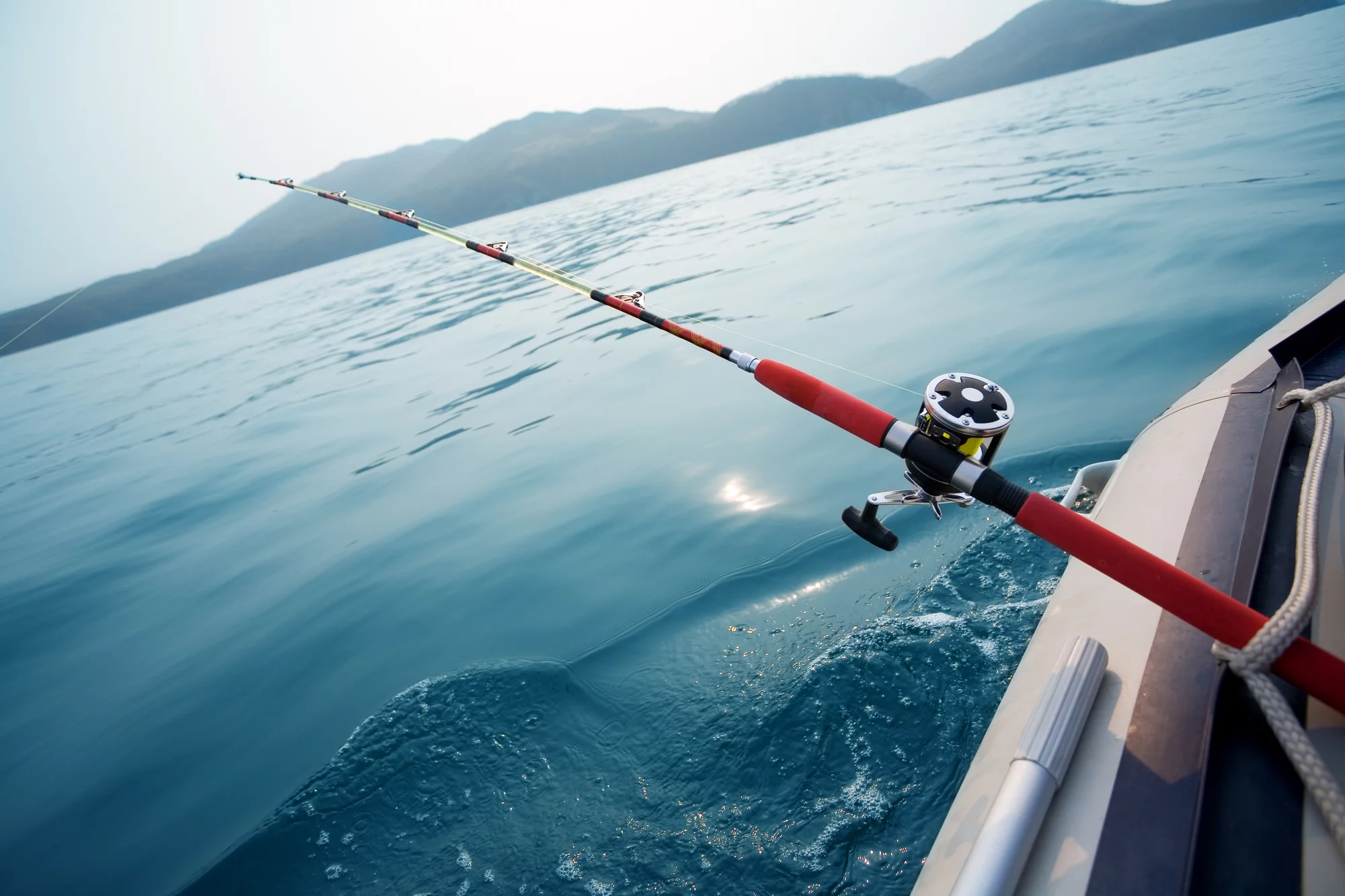
Line-fishing Practices That Are Killing The Planet
There are several commercial fishing practices that are causing disruption in the ecosystem. And we can utilize the Ducktrap example to showcase what is happening to Atlantic Salmon.
According to the lawsuit, Mowi® (Ducktrap) uses vast quantities of wild-caught fish as feed for the salmon it raises. Because Salmon are carnivores and require over a pound of wild fish for every pound of weight they gain, this has prompted experts to criticize this practise saying it's "unsustainable for ocean ecosystems."
The ecologically dangerous method of salmon farming known as "open internet-pen aquaculture" allows you to have upward to seventy,000 salmon per pen. California, Alaska & Washington State has banned this practice because of the negative touch on on the surround. However, these practices are still used all over the world and put the surrounding wild fish and the public at risk for pathogens and diseases carried by the farmed Salmon.
When diseased Atlantic Salmon escape the pen, they can infect other wild Salmon and put the ecosystem into jeopardy. Unfortunately, this happens quite frequently to the largest producer of Atlantic Salmon in the world. The lawsuit states:
"[I]n the early on 2000'due south, 100,000 Mowi salmon escaped into the wild in Washington County, Maine and another $10 one thousand thousand worth of salmon perished in the frigid wintertime waters. In January 2020, more than than 73,000 salmon escaped from a Mowi aquaculture site off of the coast of Scotland post-obit a structural failure, making the third major Mowi fish escape within 14 months, following an incident in November 2018 when 24,572 salmon escaped and another in October 2019 when 23,970 salmon escaped from Mowi pens into the surrounding environment."
Farmed Salmon Suffer From Poor Fauna Welfare
There are several organizations like OneKind and Monterey Bay Aquarium that rate angling operations by brute welfare amid other things.
OneKind warns that the Mowi® operation in Scotland has been rated as i of the industry's worst "due to bloodshed rates, parasite infestations, stress levels, overstocking, genetic deformities, and escapes, amid other factors. In fact, Mowi is the second worst out of eight famed fish producers on beast welfare."
Crowded pens tin can lead to very stressful atmospheric condition for Atlantic Salmon, which makes them become highly aggressive and causes them to hurt each other constantly. Don't forget they are carnivores then they are effectively ripping each other apart when aggressive. Fish who discover themselves overwhelmed by other aggressive fish cannot seek shelter because everything is out in the open and there is no way to hide.
Finally, dice-offs can happen often.
"Between July and September 2019, approximately 737,000 salmon from 12 separate Mowi fish farms in Scotland were killed by algae blooms, poor wellness, and illness. In May 2020, one,5 million juvenile salmon died Mowi's new hatchery in Northern Kingdom of norway."
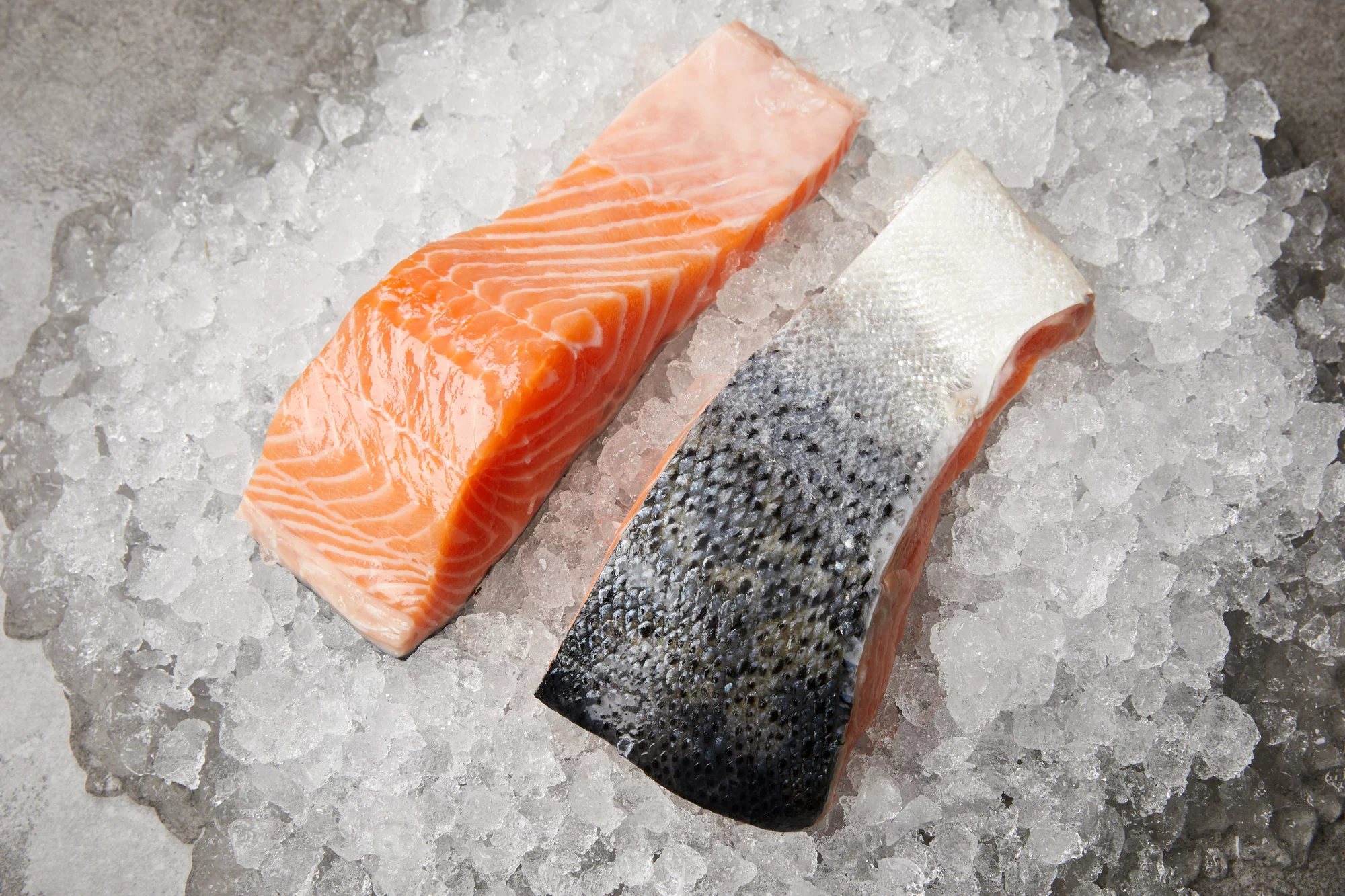
Utilise of Drugs & Other Chemicals to Care for Farmed Fish
When unsanitary conditions are nowadays in farmed Atlantic Salmon, companies accept a wide array of anti-microbial drugs that tin can pose risks to human health and the surround to use.
According to Mowi®'s own audit documents, their salmon is treated with antibiotics like florfenicol, oxytetracycline, and sulfamerazine. The salmon are likewise administered sedative (yes, sedatives!) tricaine mesylate, and semi-synthetic insecticide, & emamectin benzoate. They likewise use chemical disinfectants, including formaldehyde-based formalin (a known carcinogen) and bleach.
Why is this all happening? Sea lice and other diseases that become overwhelming when large aggressive Atlantic Salmon are kept in small pens. Diseases such as this take the potential to take concord:
- Sea lice are parasites that attach themselves to the Atlantic salmon and feed on their flesh, scales, and tissues. This eventually leads to the trigger-happy of flesh and open wounds with tissues exposed, causing hurting and creating an entrance for diseases. Information technology tin can be as loftier as 29.5 woman lice per fish.
- Cardiomyopathy syndrome is a disease impacting the heart muscle of salmon, leaving them weak and fragile.
- Amoebic Gill Disease is a disease of parasites taking hold and will eventually cause expiry via asphyxiation.
- Infectious Salmon Anaemia is a disease without a cure and any infected fish must be immediately slaughtered to protect the rest of the schoolhouse. In 2016, over 100,000 salmon died from Amoebic Gill Affliction over a period of ten weeks.
- Improper Development from Breeding with Wild Salmon from Escapes. When salmon escape, like how 300,000 salmon escaped in 2017. These creatures are poorly adapted to life in the wild and suffer tremendously. Escaped farmed salmon too interbreed with wild salmon creating offspring that take reduced attributes congenital into them like poorer fettle capability.
Antibiotics in Atlantic Salmon Contribute to Antibiotic-Resistant Leaner in Humans
When information technology comes to farmed salmon, the almost dangerous office of their line-fishing practices are connected with their over-use of antibiotics.
In 2015, it was discovered that the antibiotic-resistant bacteria adult through the over-use of antibiotics in fish farming practices can be passed down to humans in their gut microbiome leaving them more susceptible to antibiotic-resistant bacteria.
Co-ordinate to The Center for Disease Control (CDC) "each year in the U.S., at to the lowest degree 2.eight 1000000 people get an antibody-resistant infection, and more than 35,000 people die." In fact, drug resistance is one of their top concerns. Why? Well, if we lose the ability to care for people with antibiotics, nosotros end to have modern medicine.
In addition to antibiotic-resistant bacteria, people with allergies tin react to seafood using those antibiotics to treat disease.
The practiced news is the Canadian utilize of antibiotics in Atlantic Salmon has gone down. Yet in 2018, it was discovered that the use of antibiotics in Chili has gone up.
The regulatory framework in Kingdom of norway and Canada has improved in terms of testing the flesh to ensure information technology's below "safe limits" when fish are harvested.
Is Information technology Possible to "Sustainably Source" Farmed Fish? Await for Certifications.
When adept practices are used, it's possible to farm seafood in a way that has minimal or little bear upon to the surroundings. Such operations limit habitat impairment, disease, escape of farmed fish, and the use of wild fish as feed. Some of the better fishing practices you want to look for are the following based mostly on the Monterey Bay Aquarium Seafood Watch program:
- Basic compliance and availability of data
- Less waste product discharged (like nitrogen & phosphorus) per pound of salmon
- Less fish per pen
- Pens that are in deeper waters similar in Nordland, Skjerstand Fjord in Norway have far less disease because the deeper waters provide more water current.
- Opting for small fish to eat sea lice instead of using drugs & chemicals.
- Restriction of chemic use in general, like avoiding critically important antibiotics
- Lower ratio of wild-caught fish used every bit fishstock for sustainable & not-toxic reasons
- No copper nets, instead use lubrication on nets instead of chemicals
- Workers are paid a fair wage and the performance doesn't destroy the local economic system or other fishing villages
- Prevent overfishing (if wild-caught)
- Replenish depleted stocks of wild-caught fish (if wild-caught)
Types of Salmon Certifications That Make Sense
There are many seafood certifications out there, but when information technology comes to Salmon, our favorites were Marine Stewardship Council (MSC) Certified Sustainable® & Aquaculture Stewardship Council.
- Aquaculture Stewardship Council (ASC) is an independent, international non-profit organization that manages a certification and labeling programme for responsible farmed fish and shellfish operations.
- Marine Stewardship Council (MSC) Certified Sustainable®: is an international non-profit system that certifies wild seafood, and recognizes and rewards efforts to protect oceans and safeguard seafood supplies for the future. The MSC Blue Characterization is only applied to wild fish or seafood from fisheries certified to the MSC standard, a scientific measure of sustainable angling.
Other certifications you volition discover out at that place in the seafood world are numerous and y'all can expect at more of them hither:
- Seafood Watch from the Monterey Bay Aquarium provides recommendations on seafood that's fished or farmed in means that have less touch on on the environment. While not a certification, signs may be placed in the store or restaurant so if you eat out, you'll know where to get.
- Global Seafood Sustainability Initiative (GSSI) is an international public-private partnership on seafood sustainability with 90+ stakeholders manufacture-wide, including companies, NGOs, governments and international organizations.
- Best Aquaculture Practices® (BAP) is an international certification programme for farmed fish and shellfish, and it is based on industry favorable standards. BAP standards developed by the Global Aquaculture Alliance.
- Off-white Trade Certified® Seafood is a new certification that assesses fair wages, safe working conditions, and environmental protection for the fishermen and farmers. Information technology may include additional benefits such every bit providing teaching, healthcare, and clean water for the local community where the seafood is from.
- Sustainable Fishery Advocates operates the FishWise programme for labeling seafood by retailers.
- Friends of the Body of water® is an contained organisation that developed certification schemes for products from sustainable fisheries and aquaculture. The certification schemes likewise include standards for the reduction of carbon footprint and social accountability.
- NOAA Fisheries manages the United States fisheries within 200 miles from our coastlines under the Magnuson-Stevens Fishery Conservation and Direction Act (MSA).
- NOAA'south FishWatch.gov website has skillful information and resources for consumers to learn about different species – both wild and farmed.
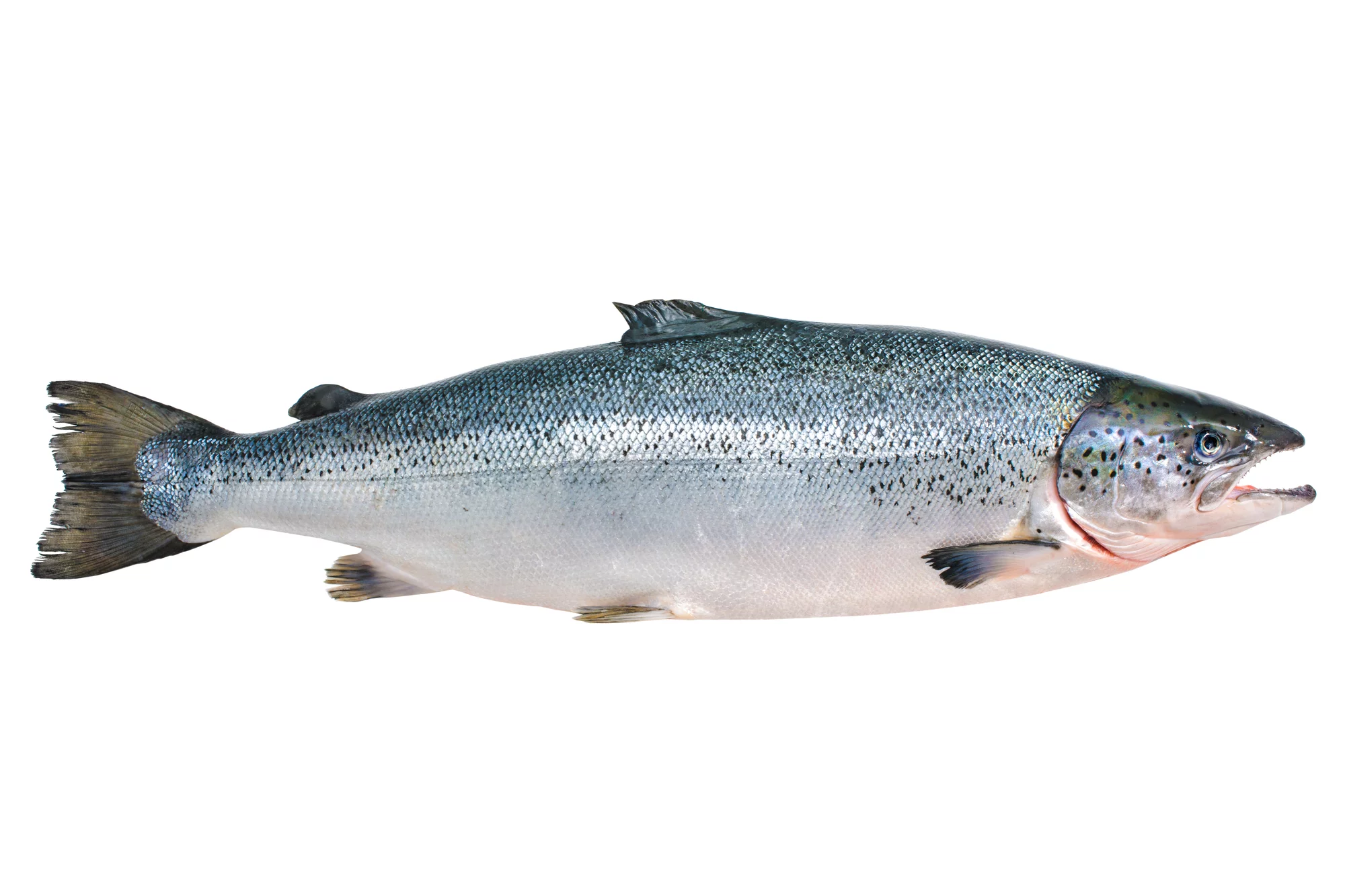
Where Are The Best & Worst Farmed Fish Constitute?
Over a decade ago, several studies were done looking at PCB, heavy metals and dioxin levels of farmed salmon and compared it to wild-caught salmon. The results were exactly what you would expect–Farmed fish had more PCBs, and other types of contaminants than wild-caught salmon.
At the time, the worst culprit was Norwegian Atlantic Salmon, who relied on wild-defenseless fish stock from the Baltic sea, which is highly polluted with PCBs & dioxins, to feed the Atlantic salmon. Canadian and Scottish salmon were also tested.
Consumers in America immediately stopped buying Norwegian salmon and acquired the Norwegian line-fishing industry to make some much-needed changes–they stopped relying on polluted feedstock and instead fed the fish more institute-based oils and protein. At present Norway has one of the lowest PCBs contaminants for Atlantic Salmon.
Now that the PCB problem has been solved in Kingdom of norway, another issue has crept up from removing wild fish as feed. Researchers at Nofima The Norwegian Constitute of Nutrient, Fisheries and Aquaculture Research found that the plant-based oils they were using had the ability to change the way the Atlantic salmon metabolized fat and delivered fewer Omega 3s to your plate. In other words, if you use cheap quality oils in fish food, yous get less omega 3s in the Atlantic Salmon. Last year, they likewise establish that a special combination of land and fish oil may be the solution going forward to boost the omega-three to omega-6 ratio for farmed fish.
Aside from PCBs and less omega 3s, virtually Atlantic Salmon from Republic of chile was determined to apply a dangerous amount of antibiotics likely from conditions that make the salmon diseased. Scotland has been called out for dangerous brute atmospheric condition and overuse of drugs.
When it came to mercury levels, farmed fish and wild-caught were well-nigh the aforementioned. It's low.
But not very much has been washed within the terminal decade to look at contaminants as a followup, nevertheless, the Monterey Bay Aquarium Seafood Watch is monitoring fishing practices and rating them.
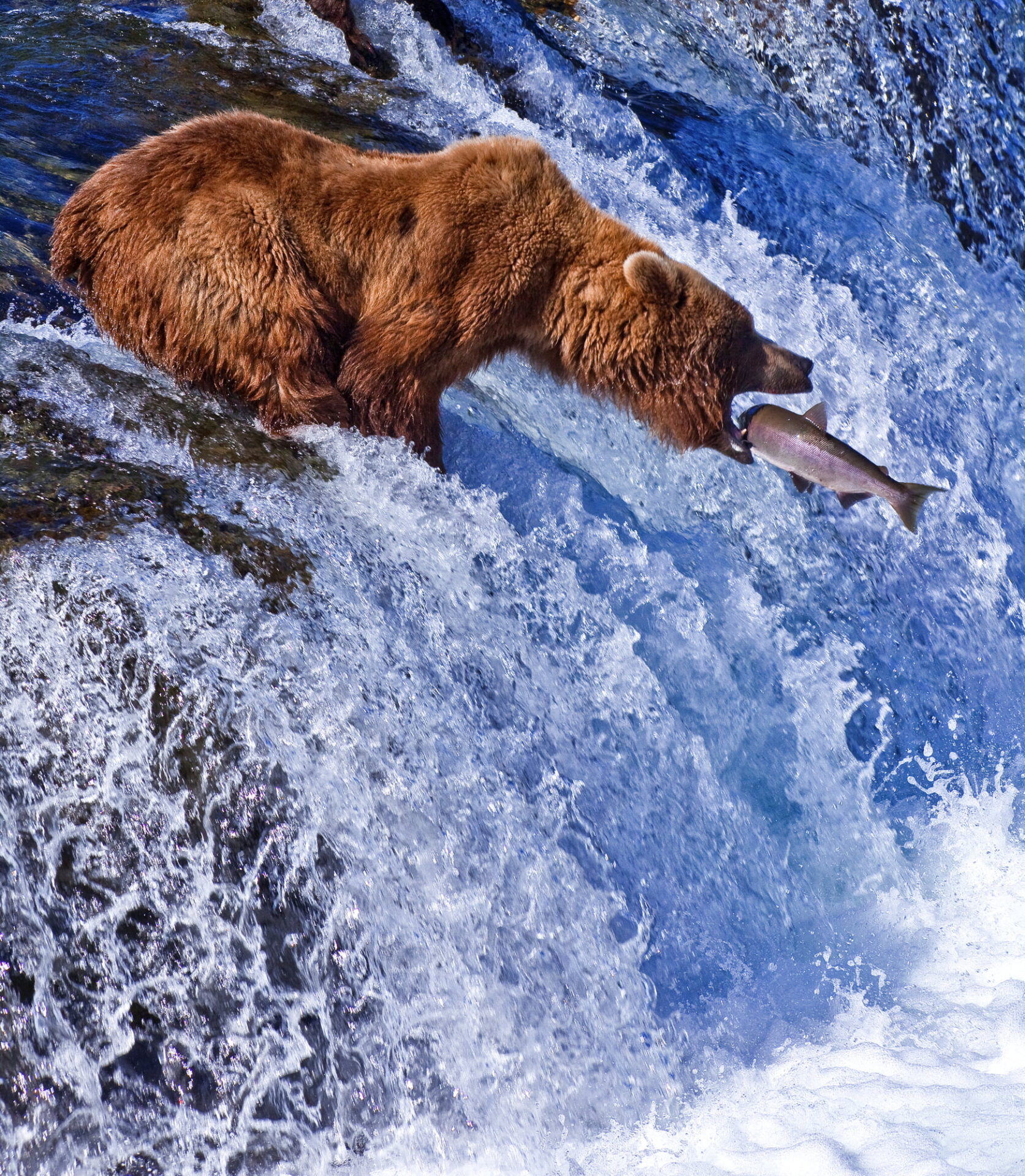
Best & Worst Places to Get Salmon
Nosotros used the Monterey Bay Aquarium Seafood Lookout and studies looking at antibiotic utilize to determine which areas to await for salmon.
Best Geographic Locations for Salmon
- Wild-caught from Alaska, Bristol Bay, etc.
- Norway – Nordland, Skjerstad Fjord–farmed
- Any Indoor recirculating tank (with wastewater treatment)–farmed
- New Zealand – Southwest Pacific Ocean–wild
- New Zealand – Oceania – Inland waters–wild
- U.S. – Washington, Northeast Pacific Bounding main (Early summer run)
Better Geographic Locations for Salmon
- Faroe Islands – Northeast Atlantic Ocean–farmed
- Canada – British Columbia, Northeast Pacific Sea–farmed
- U.S. – Maine, Northwest Atlantic Ocean–farmed or wild
- Scotland – Orkney Islands, Northeast Atlantic Sea–farmed
- Indoor recirculating tank (without wastewater treatment)–farmed
- Kingdom of norway – Northeast Atlantic Ocean–farmed
Bad Geographic Locations for Salmon
- Scotland – Western Isles, Northeast Atlantic Ocean–farmed
- Chile – Southeast Pacific Ocean–farmed (high antibiotic usage)
- Canada – Northwest Atlantic Ocean–farmed
- Scotland – Mainland, Northeast Atlantic Ocean–farmed
- Scotland – Shetland Islands, Northeast Atlantic Body of water–farmed
Franken Fish Are Coming To A Store About You Unlabeled
The first genetically modified animal to exist approved for human consumption is GMO salmon and it'southward coming to a restaurant or grocery store near you. AquaBounty has been developing "AquAdvantage" GM salmon for xxx years and it's finally jumped over any and all regulatory hurdles it needed to legally sell unlabeled salmon to your family. They started their offset harvest and are hoping to make a profit presently.
"The beginning harvest of conventional salmon represents the first of the commercialization phase for AquAdvantage salmon, a milestone over xxx years in the making. This will be a breakthrough moment not only for AquaBounty, but for the industry — as it will be the start sale of a genetically engineered creature protein in the U.s.a." says CEO Sylvia Wulf.
Fortunately, Friends of the Globe has been asking national & regional grocery stores, restaurants, chefs, especially brands like Costco®, Trader Joes® & Walmart® to have a pledge and commit to fugitive selling GM salmon. They did. An example of stores selling GM salmon are Ahold Delhaize, Food Panthera leo®, Behemothic® Nutrient, The Giant® Company, Hannaford® and Stop & Shop®.
Considering of and then many grocery store outlets committing to non selling the salmon, AquAdvantage is expected to have some trouble getting into grocery stores and volition instead focus their attending on restaurants where people are less likely to ask nigh the origin of the seafood. Then Mamavation would recommend fugitive any "farmed fish" in restaurants that are not on the list for the next couple of years. Wild-caught fish are never genetically modified.
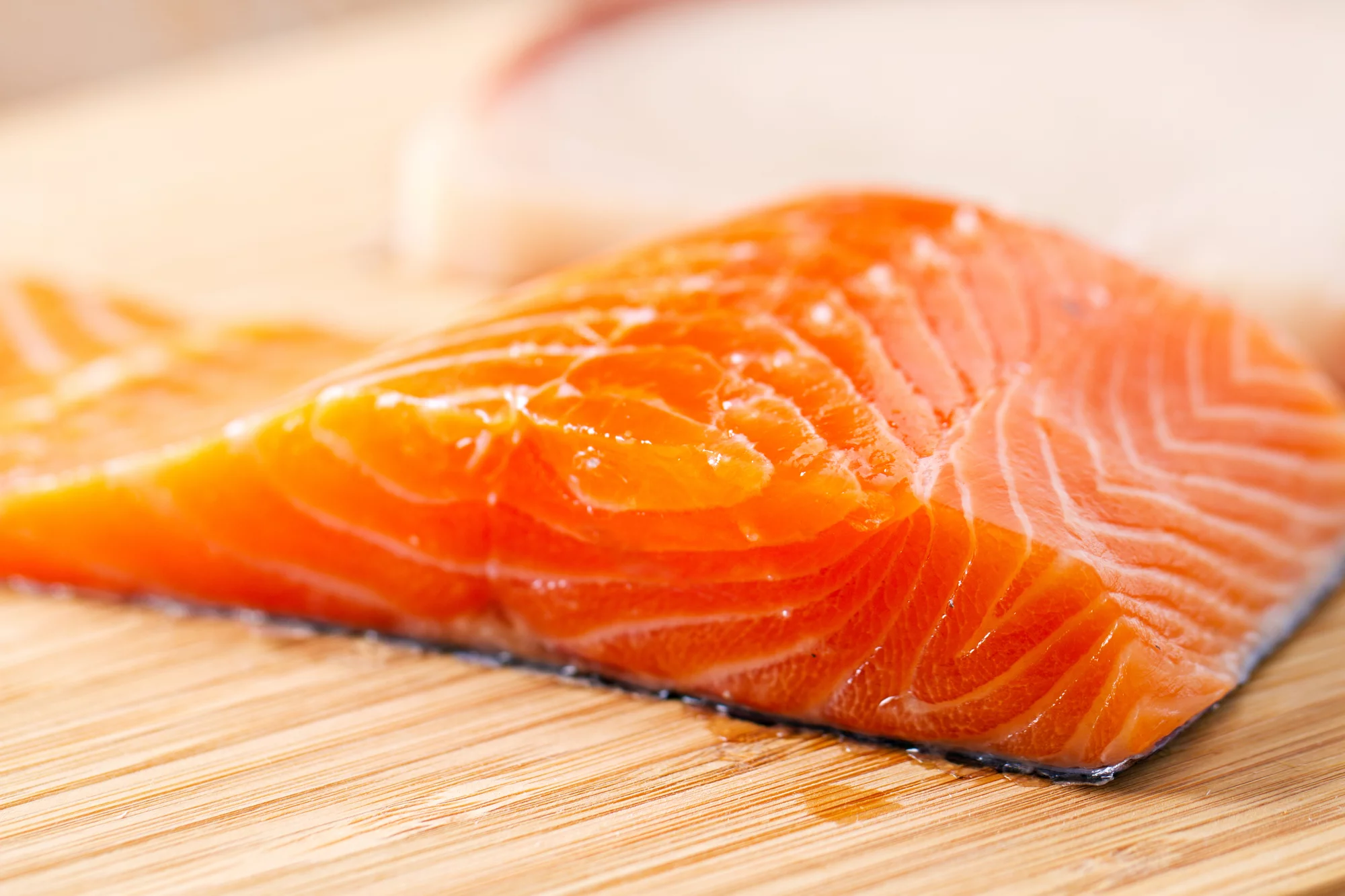
What About COVID and Salmon?
In July, the Chinese government suspended all shipments of Norwegian Atlantic Salmon because cutting boards institute in a Wuhan wet market had tested positive for COVID-19.
Immediately, the land-run newspapers reported on the issue and it sparked major supermarkets in Beijing to remove salmon from the shelves coming from Europe.
But co-ordinate to Keith Neal, an emeritus professor of the epidemiology of infectious diseases at United kingdom'south University of Nottingham, the tests were probable a result of cross-contamination.
Immediately shares of Norway Regal Salmon, Faroe Islands-based Bakkafrost (BAKKA.OL) and Norway'southward Mowi (MOWI.OL) and SalMar (SALM.OL) were downwardly 3-five%. However, Bakkafrost and Norway Royal Salmon said employees had been tested negative for the virus.
China later reversed its decision later on testing Norwegian salmon for COVID straight and information technology coming upwards negative.

Did Fukushima Kill The Ocean?
Close to 10 years after Nihon's Fukushima Dai-ichi Nuclear Power Constitute melted down and released radioactivity into the ocean later on the Tojoku-oki earthquake, a study in the journal Science has updated the public about sea health. According to this study, radiation levels have fallen to safe levels in the ocean, just not next to the shuttered power constitute.
In detail, "concentrations of cesium isotopes, some of the most arable and long-lived contaminants released, are hundreds of thousands of times lower than at their elevation in April 2011" which is very good news.
Seafood exterior the area are passing Japan's limits for radioactive contagion, but danger still exists on the belongings where storage tanks on country surrounding the plant hold contaminated wastewater.
Ken Buesseler, a marine pharmacist at the Woods Hole Oceanographic Institution and writer of the paper, mobilized a team of scientists to conduct the outset international inquiry cruise to written report the early pathways that cesium-134 and -137 created through the ocean, and also created a network of denizen scientists in the U.South. and Canada to monitor the inflow and move of radioactive textile on the Pacific coast.

What About Farmed Fish on Land In Tanks That Never Touch on the Bounding main?
There's lots of excitement effectually an aquaculture visitor, Atlantic Sapphire®, setting upwardly store in the Florida Everglades led by two young and hip Norwegian fishermen. These young high tech Norwegians got their start by selling "cleanerfish" to Norwegian fisherman, which are used to kill bounding main lice on farmed Atlantic Salmon instead of using antibiotics and other drugs. They then started upwardly a state farmed organic fish operation that rapidly became Whole Food'southward principal supply of farmed fish.
Looking to expand into the U.s.a. and decrease the corporeality of fossil fuels needed to transport Norwegian Salmon to Americans, they've purchased a tomato farm, which is over the perfect hydrological conditions for breeding farmed fish on the land inside the Florida Everglades. The underground aquifers provide the freshwater to support the Atlantic Salmon when they are young, then abundant saltwater that mimics when they get out to sea to fatten up and mature. The water in those tanks are circulated to mimic natural currents, filtered to remove waste material, oxygenated to help them exhale easier, and so monitored closely to prevent expiry.
Past 2031, Atlantic Sapphire® plans to grow 220,000 annual tons of Atlantic Salmon, which will exist well-nigh 44% of US salmon consumption on 160-acre tract that one time grew 5,000 tons of tomatoes per year.
Referred to as The Bluehouse™, Politico describes it as "a high-tech experiment in productivity and sustainability, a supersized aquatic version of greenhouse agriculture that aims to solve a host of environmental problems plaguing conventional salmon farms in coastal waters."
Proponents of sustainable aquaculture say "Its scarlet-fleshed fish are growing without antibiotics or pesticides, without exposure to seaborne diseases or parasites, without escapes that could allow them to endanger wild fish, and without impairment to the overfished and overpolluted oceans."
Will this work out? I think it depends on what fish feed they end up using. Over an interview on the phone, they told us they were considering using "unmarried-cell algae oil" (which nosotros discovered is made through synthetic biology), other vegetable oils, or black soldier fly meal. We're hoping they go with the blackness soldier fly meal.

Are In that location Nutritional Differences Between Farmed and Wild-Caught Salmon?
There are some nutritional differences between farmed fish and wild-caught salmon.
In terms of omega-3 fatty acids the winner goes to wild-caught. Omega-three fat acids are essential nutrients important to fetal brain development, hardening of arteries, protecting your heart, and warding off inflammatory disease, Alzheimer's illness, arthritis, and symptoms like headaches & cramps.
In a written report looking at the ranges of omega-3 fatty acids in various types of seafood like salmon, Chilean seabass, pollock, cod, catfish, etc. Salmon samples ranged from 717 – 1533 mg of omega-3 fatty acids per 100 grams of salmon with wild-caught being on the meridian end and farmed fish existence on the depression end. The researchers figured the variances in quality probable ranged from what the fish feed contained.
Later, the USDA did their own testing and found farmed salmon contains more omega-3 fatty acids than wild-caught salmon. And y'all'll also notice that the omega-3 to omega-vi ratio is a bit off demonstrating the vegetable oil inside the fish feed greatly impacts this ratio. Dorsum when farmed Atlantic Salmon used to use wild-caught fish as fish feed, there were higher omega-3s simply more PCBs.
1/ii Filet Wild-Caught Salmon (198 grams)
You'll detect lower calories, protein, fat & saturated fat. Yous'll as well observe a healthy balance of omega-3s to omega-6s.
- 281 calories
- 39.3 grams of poly peptide
- 12.half dozen grams of fatty
- one.9 grams of saturated fat
- 3.9 grams of omega-3s
- 341 mg of omega-6s
- 109 mg of cholesterol
1/2 Filet of Farmed Salmon (198 grams)
You'll notice more than calories, slightly more protein, more fat, and saturated fat. Slightly more omega-3s but Style more omega-6s.
- 412 calories
- twoscore.iv grams of protein
- 26.6 grams of fat
- 6 grams of saturated fat
- 4.9 grams of omega-3s
- 1,944 mg of omega-6s
- 109 mg of cholesterol
The just exception we've institute to these nutritional stats are farmed fish from northern Skjerstad Fjord in Kingdom of norway where they have very deep water that makes for less disease and more h2o currents. These are considered sustainable angling operations. These brands typically have better omega-3s to omega-6s ratios. 1 brand, in particular, Blue Circumvolve Foods, uses small Lumpsucker fish to eat the lice off of salmon thus bypassing the need for antibiotics and insecticides.
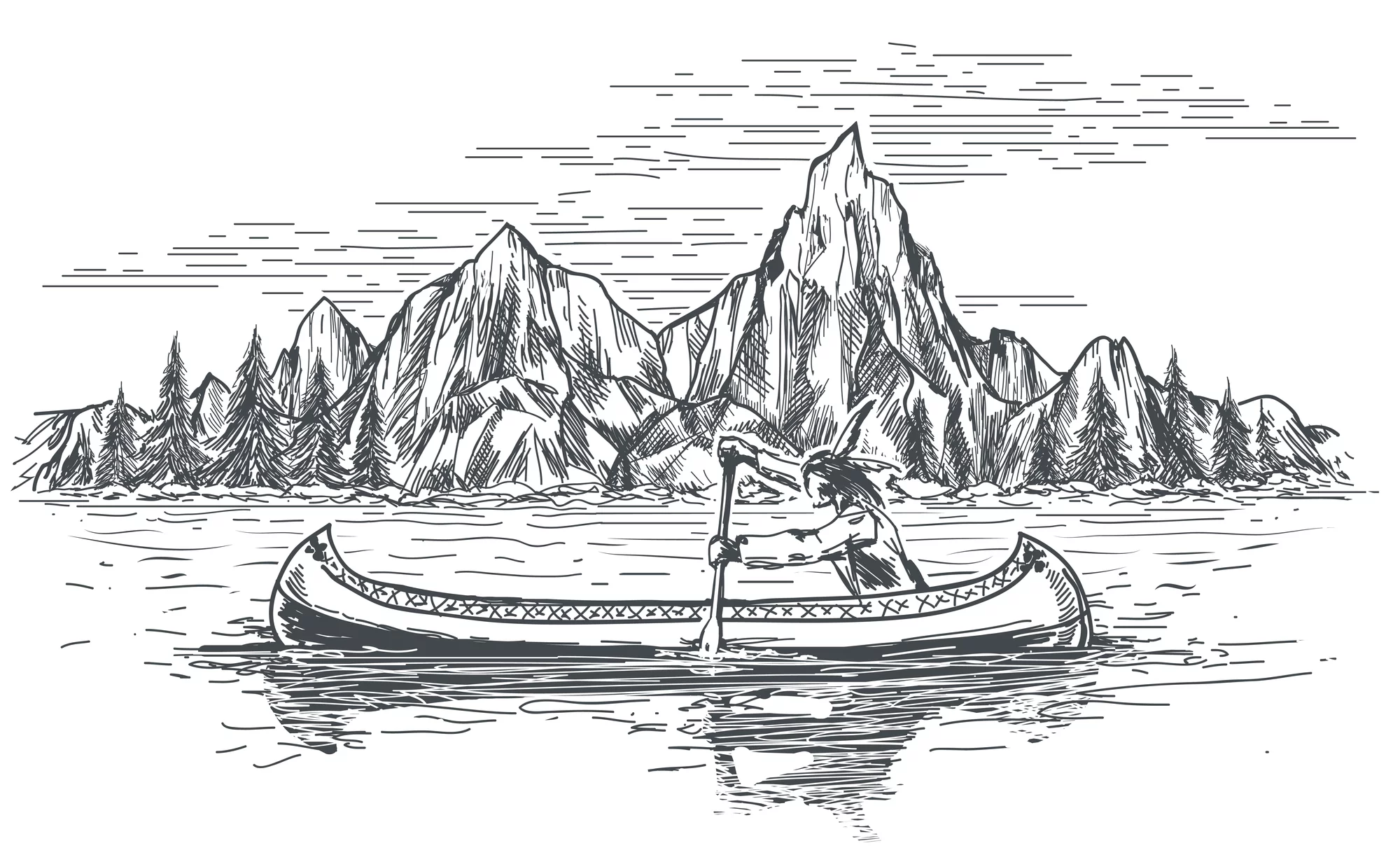
Is Wild-Caught Salmon Condom?
With all this talk of farmed fish, you lot'd think that wild-caught fish was completely safe, just there are some issues depending on where you get the fish from.
The pollution that humans exact on the land is credible in the water and will get taken up by seafood. So with wild-caught salmon, you'll find various degrees of PCBs, metaformin, mercury and some other pollutants based on the location. In other words, the cleaner the rivers and streams are, the safer the salmon.
Studies in the early on 200s found loftier levels of PCBs in farmed fish vs. wild-defenseless salmon. That forced some farmed fish operations to use less fish stock in fish feed, but when information technology comes to wild-caught fish, there is very picayune you tin practice almost the natural environment brusk of cleaning it up.
However, even with the cleanup of the industry, wild-caught is yet preferable most of the fourth dimension.
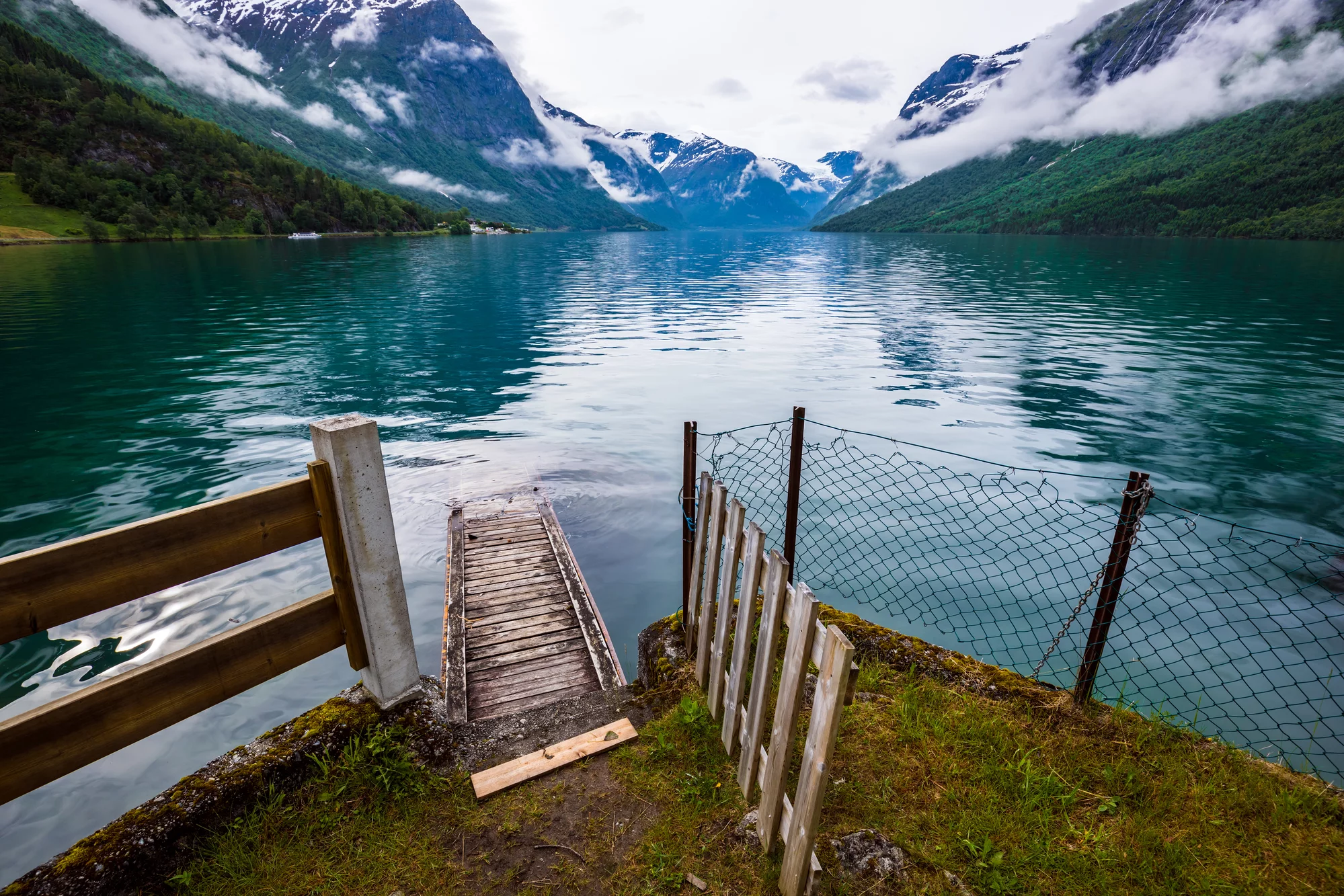
Mamavation's Investigation on Salmon Brands
This investigation was very hard to practise. We ended up looking at known trends in line-fishing practices in certain areas of the world and overlapped that with where the seafood was coming from with each make. Brands that had less information bachelor to consumers got a lower rating. Brands were also marked downward for including less than desirable ingredients, misrepresenting any factual claims nigh the product, not responding to consumer inquiries, & not containing any 3rd party certifications.
Not Our Favorite Salmon Brands
These brands were either from areas that had very problematic antibiotic use, PCB contamination, or fishing practices that put the ecosystem into danger. This listing as well contains products that have added less than desirable ingredients. Brands were too marked down for not responding to any inquiries.
- Acme Smoked Fish: Blueish Hill Bay Smoked Salmon
- Height Smoked Fish: Great American Smoked Fish
- Bumble Bee® Pink Salmon–canned
- C.Wirthy & Co. ™ Blackened Salmon
- Cedar Bay™ Grilling Co. Planked Atlantic Salmon, Applewood with Orange & Ginger
- Costco Taste of Scotland Smoked Salmon
- Crown Prince Natural® Alaskan Pinkish Salmon
- Crown Prince Natural® Pink Salmon (canned)
- Ducktrap River® Maine All Natural Smoked Atlantic Salmon (Lawsuit)
- Echo Falls Chum Smoked Salmon
- Echo Farms Common cold Smoked Salmon
- Harry & David® Northwestern Smoked Salmon
- Harry & David® Wild Alaskan Smoked Salmon
- Morey's ® Fish Creations Steakhouse Atlantic Wild Salmon
- Nathan's Archetype Smoked Nova Salmon
- Ocean Dazzler: Lascco (Los Angeles Smoking & Curing Company) Smoked Salmon
- Solex® Catsmo® Smoked Salmon Collection: 4 types: Gold Label Smoked Salmon, Irish Smoked Salmon Scottish Smoked Salmon
- St. James Smokehouse® Scott Reserve Scottish Smoked Salmon
- True North Seafood Co.®–Martha Stewart'due south Line
- Vita Classic Nova Salmon
Better Salmon Brands
This category represents brands that were improved but not quite the best. They included areas that had "better" fishing practices, prior PCB contamination, or antibiotic utilize. This category too contained a smaller amount of additives & preservatives. Brands that were on the fence but didn't respond to us went into this category as well. Based on the potential for bisphenol exposure, we also put canned brands in here using wild-caught salmon.
- Meridian Smoked Fish: Bluish Loma Bay Smoked Salmon Poke Bowl
- Browne Trading Company: Classic Smoked Salmon
- Chicken of the Sea® Pink Salmon Skinless and Boneless (pouch)
- Demings® Wild Alaskan Cerise Sockeye Salmon
- Demings® Wild Caught Alaskan Pink Salmon
- Ducktrap River® Maine Organic Smoked Atlantic Salmon
- Encore Seafoods Stuffed Alaskan Salmon
- Gourmet Canadiana: Cheena Wild Sockeye Smoked Salmon Retort
- Loftier Liner Alaska Pollock Buffalo Wild Wings
- Honey Smoked Fish Co.®
- Jet Set Sam Premium Wild Smoked Sockeye Salmon Lox
- Kroger® Wild Caught Boneless & Skinless Pinkish Salmon Fillets
- Kroeger® Private Selection Wild Alaskan Sockeye Salmon
- Latitude™ 45 Cold Smoked Atantic Salmon
- Morey's Fish Creations Atlantic Wild Salmon Steakhouse
- New York's Delicacy Salmon Nova
- Open up Nature™ Wild Caught Sockeye Salmon
- Petrossian Smoked Salmon
- Pike Place Fish Market place Wild Fish King Smoked Salmon Fillet
- Ruby Bay® Organic Smoked Salmon
- Russ & Daughters® Irish Organic Smoked Salmon
- Sea Cuisine®: Pan Seared Alaskan Salmon
- Seabear Smokehouse® Traditional Wild Salmon
- Target® Simply Balanced™ Alaskan Sockeye Salmon Filets
- Trans-Sea® Products Smoked Salmon
- waterfront BISTRO® Salmon Fillets Wild Alaskan Pink Boneless
- Wild Planet® Canned Sockeye Salmon
- Wild Planet® Canned Pink Salmon
Best Salmon Brands
This category contains wild salmon defenseless in areas practicing sustainable wild & farmed fishing practices. This category also contains farmed fish from areas known to have better farming practices or seafood companies with ASC or MSC certification. It was not possible to define the contents of fish feed for all Atlantic Salmon brands, but certification provides us overall sustainability bug covered.
- ALDI Frozen & Prepared Farmed Atlantic Salmon
- Alaska Seafood Smoked Salmon & Seafood: Wild Caught King Salmon
- Alaska Seafood Smoked Salmon & Seafood: Wild Caught Sockeye Salmon
- Alaska Seafood Smoked Salmon and Seafood: Smoked Salmon Candy
- Aqua Star® Pacific Salmon Filets
- Blue Circle Foods Norwegian Peppered Roasted Smoked Filet of Atlantic Salmon (farmed, Nordland, Skjerstad Fjord, accept 5% off by using LEAH5 at checkout)
- Blue Circle Foods Norwegian Smoked Salmon (farmed, Nordland, Skjerstad Fjord, take 5% off by using LEAH5 at checkout)
- Blue Circle Foods Frozen Norwegian Salmon Happy Fish (farmed, Nordland, Skjerstad Fjord, accept v% off past using LEAH5 at checkout)
- Cedar Plank Foods: Wild Salmon
- Irresolute Seas Atlantic Smoked Salmon (farmed)
- Copper River Seafoods: Salmon
- Copper River Seafoods: Wild Alaskan Sockeye Smoked Salmon
- Costco® Brand: Northwest Fish Wild Alaskan Salmon
- Epic® Provisions: Maple Smoked Salmon Jerky
- Fairhaven Bay Seafoods: Filet Smoked Salmon
- Fairhaven Bay Seafoods: Wild Smoked Sockeye Salmon
- Foppen Norwegian Long Slived Smoked Salmon
- Gorton's® Natural Classic Grilled Salmon
- HelloFresh™ Delivery Service–Atlantic Salmon (farmed)
- HemisFares™ Beech Wood Cold Smoked Salmon
- IKEA® Frozen Farmed Salmon Filets
- IKEA® Smoked Farmed Salmon
- Portlock® Wild Nova Smoked Salmon
- Regal™ Beech Woods Smoked Salmon
- Purple™ Dill Cured Smoked Salmon
- Vital Choice® Seafood Company: Wild Sockeye Salmon
- Wild Selections® Alaskan Smoked Salmon
- Whole Catch Common cold Smoked Sockeye Salmon
- Whole Foods® 360 Frozen Farmed Atlantic Salmon (Nordland, Skjerstad Fjord)
- Whole Foods® 360 Frozen Wild-Caught Sockeye Salmon Fillets
Special Offer from the "Best" List– Vital Choice Seafood Visitor!
Vital Choice sells MSC-certified Salmon! Ordering from Vital Choice ways it gets shipped to your door on ice.
Vital Option has grown into a trusted source of premium wild seafood from healthy, well-managed fisheries effectually the globe. They just sell sustainably caught seafood. They then donate a portion of their profits to planet-protecting programs like SeaShare and the Natural Resources Defense force Quango.
They are also a Certified B Corporation.
Feel free to scan what they offer. Fish is wink-frozen on-site in Alaska and then transported for processing and cut into smaller pieces at the processing business firm. However, information technology stays frozen the unabridged time.
Offer: SAVE 10% OFF + Get Gratis Shipping On Orders $99+ Using Code: MAMAVATION10 At VitalChoice.com! Shop Hither!
QUESTION: Accept you noticed Ducktrap Smoked Salmon in the grocery shop before? Did yous think it was better than other brands? Does this type of marketing concern you? Let united states of america know what you think near this below.
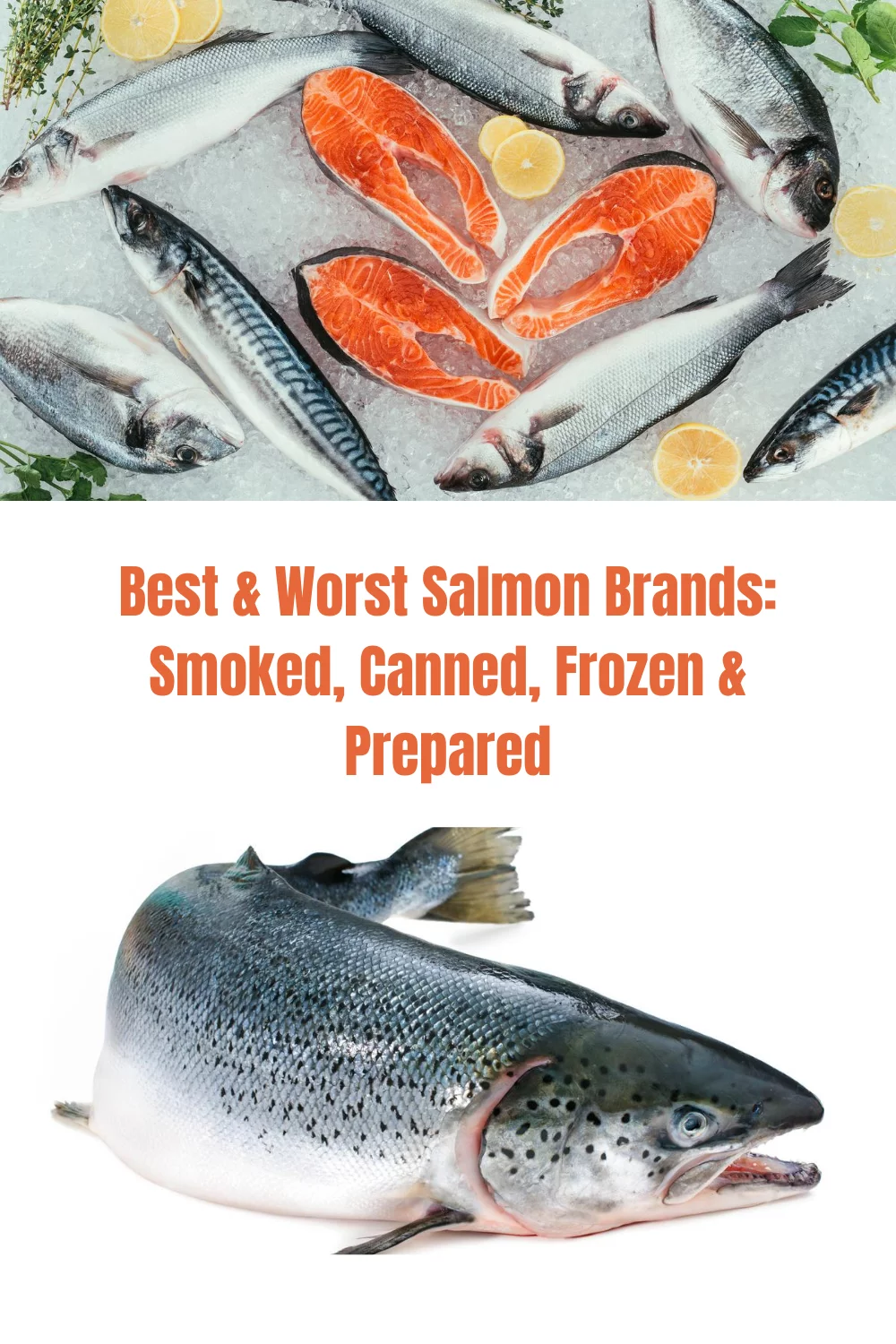
Source: https://www.mamavation.com/food/best-salmon-smoked-frozen-canned.html

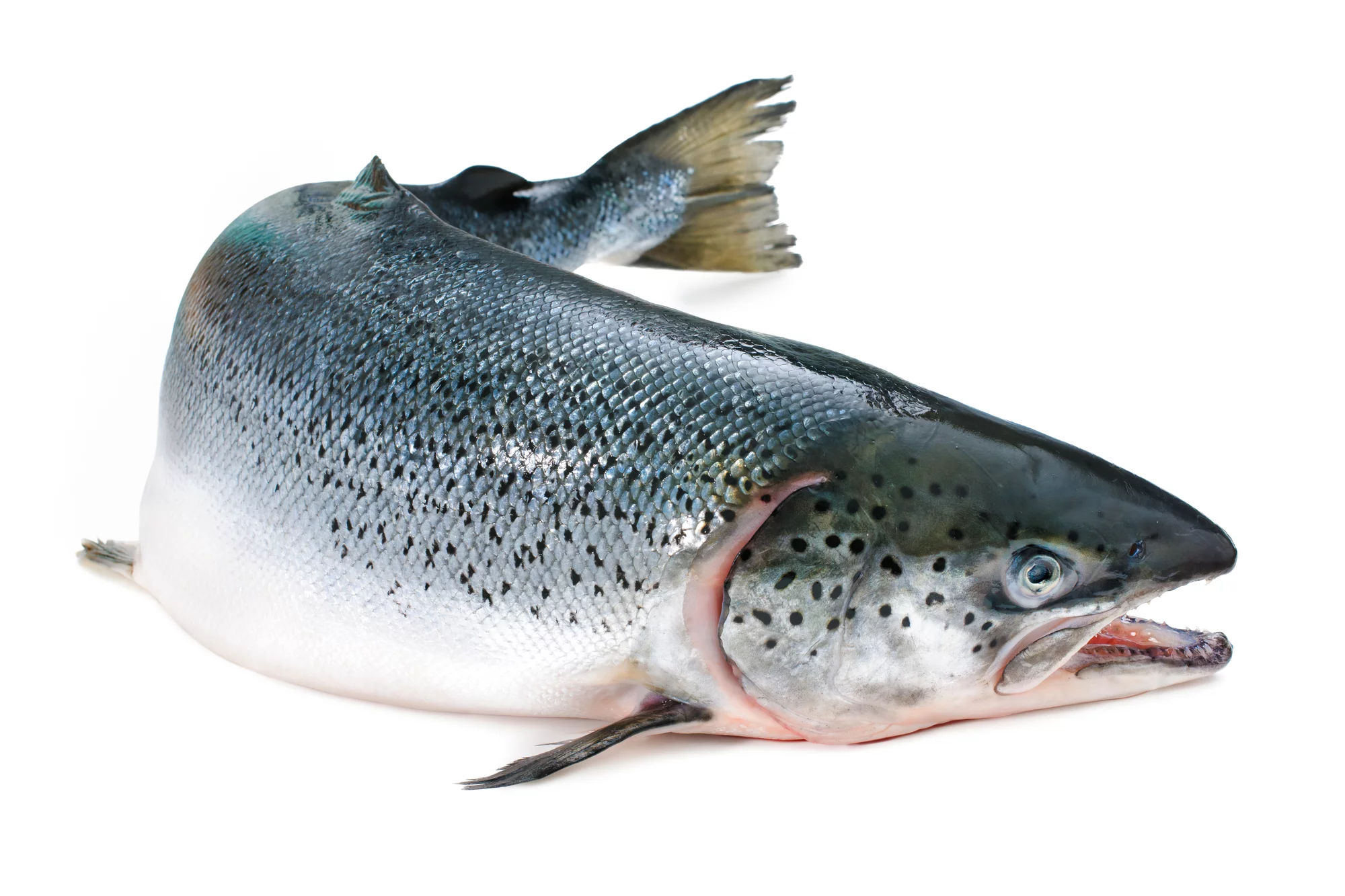
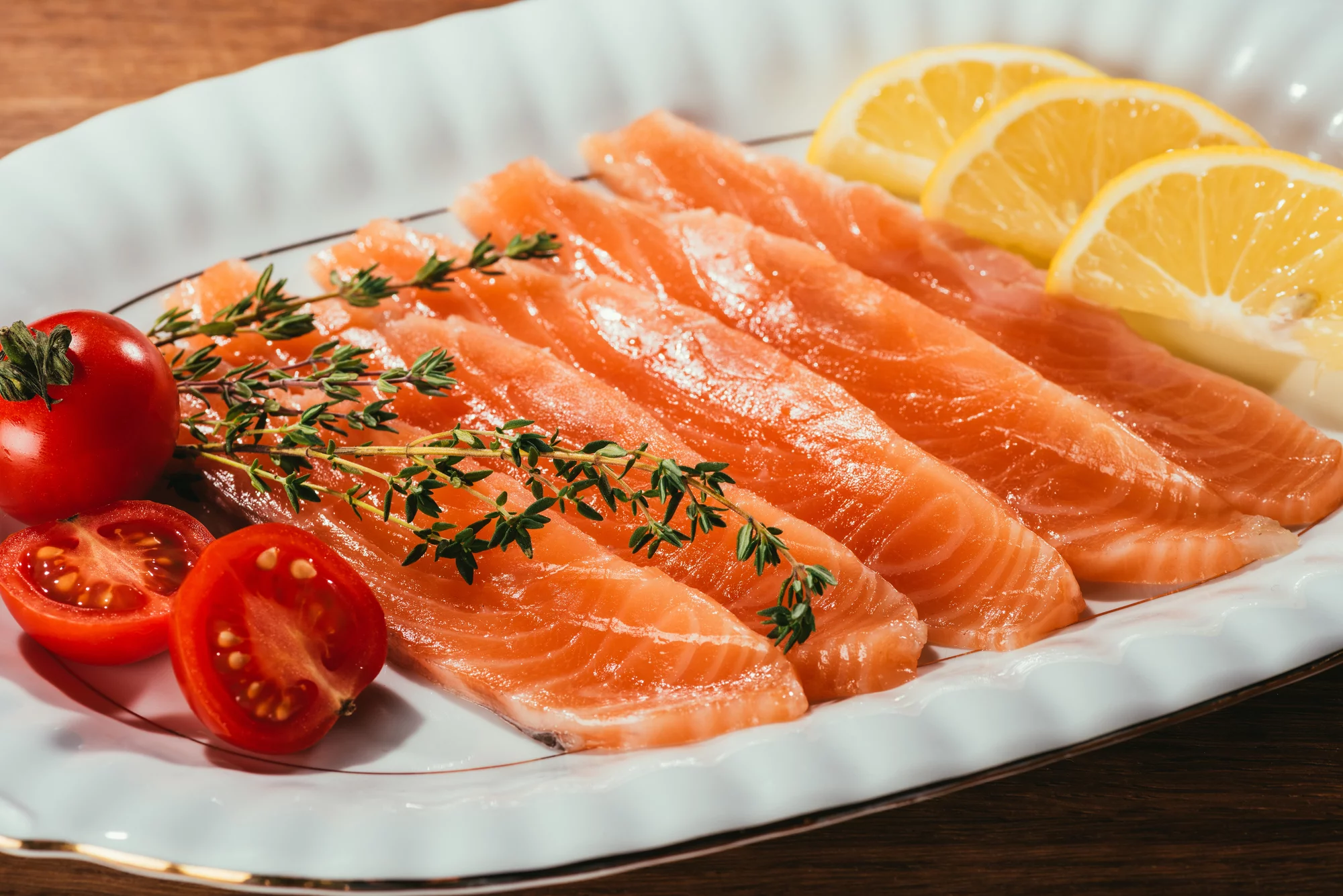
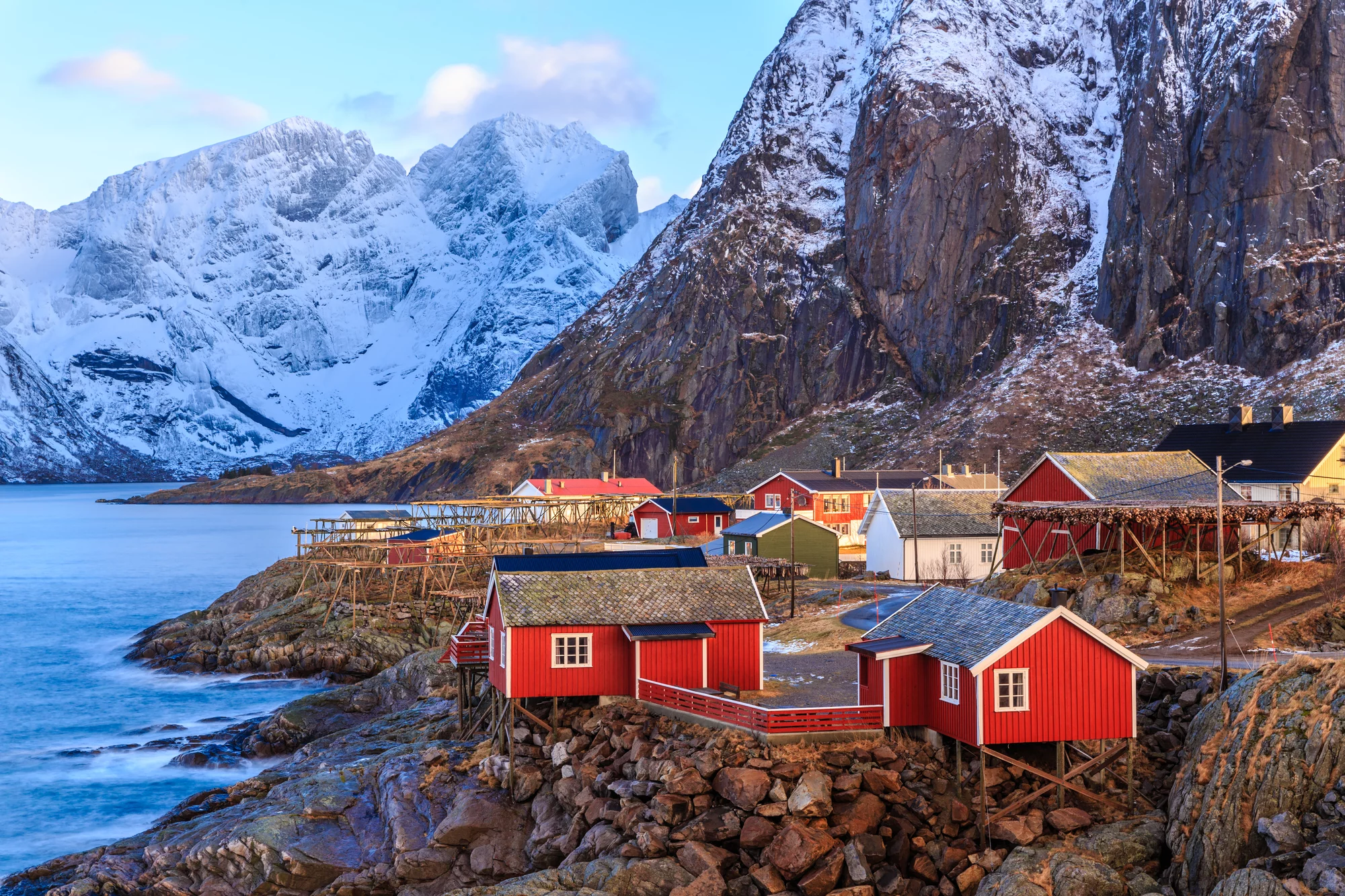

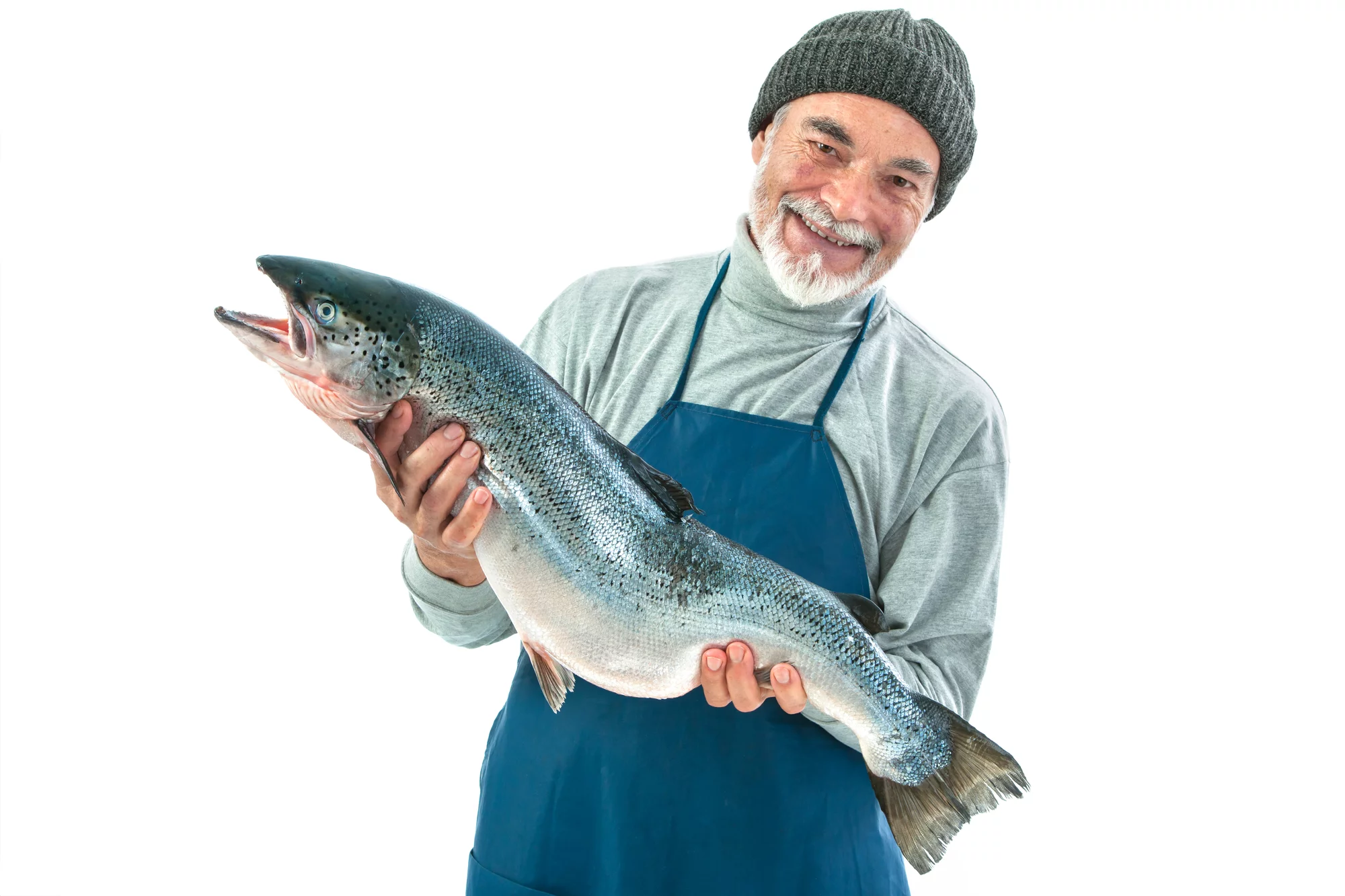

0 Response to "what is the best brands of frozen store bought salmon to buy"
Post a Comment